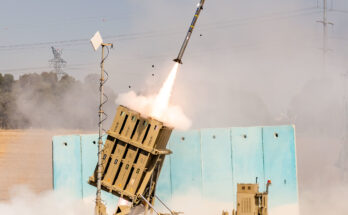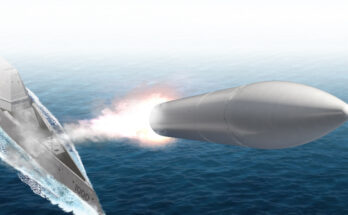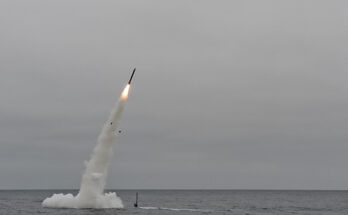Following strikes on the Syrian military, Russia has suggested that it will transfer S-300 surface-to-air missile systems to Syria’s control.
The spokesman for the Russian General Staff, Sergei Rudskoy, said in the aftermath of American, British, and French strikes on Syria that Moscow could reconsider delivering the S-300 (of an unspecified variant) to Syria.
“I would like to note that a few years ago, taking into account a pressing request of some of our Western partners, we stopped supplying S-300 air defense systems to Syria,” Rudskoy said. Following the strikes, however, he noted it is “possible to return to mulling over the issue, and not only with regard to Syria but also to other states as well.”
Syria has sought procurement of the S-300 for a few decades, in order to boost its air-defense network in the face of numerous hostile Air Forces in the region. Besides the recent American-led strikes near the capital, Israel has frequently carried out raids on Syrian soil, especially during the ongoing conflict, to target Hezbollah positions and convoys.
In 2007, Israel destroyed a suspected nuclear reactor in eastern Syria, in an operation the Israeli military officially confirmed last month.
Despite Syria’s pressing interest in acquiring the S-300, a contract has never been completely fulfilled under pressure from the West and Israel, though seemingly Syria has made payments towards the procurement of the system, under a 2011 contract. The sale was reportedly for four S-300PMU-2 surface-to-air missile systems, along with associated hardware and an unknown number of missiles, at a cost of $1 billion.
In 2013, around the time that the U.S. was considering a strike in response to a chemical weapons attack in Eastern Ghouta, a Russian military industry source told Reuters that Syria had recently begun making payments on the S-300.
The source stated, “They’ve already made the first payment for the Yak-130, likely 10 percent of it. Regarding the S-300, they’ve definitely made a first downpayment of 20 percent, but we are probably at half of the payment at this point.”
The contract was frozen and delivery of the S-300 to Syria never occurred, raising questions about the Syrian downpayment, should it have actually been made, within the context of a potential new arrangement for the transfer of the system to Syria.
As noted, Rudskoy did not mention the variant of S-300, or the quantity, that Russia was considering delivering. As the S-300 and its various versions are out of production, Syria would presumably be acquiring second-hand systems from Russian storage that would need to be refurbished prior to transfer. Iran procured four S-300 systems (perhaps the same four offered to Syria in 2011) after the conclusion of a nuclear deal with world powers that totaled around $1 billion.
In order to afford the system, Damascus will likely seek either donation, discount, or financial assistance, given that its national budget is heavily burdened by the ongoing conflict. In order to support its ally, Russia may be willing to extend some support towards the Syrian military’s acquisition of the system.
Given the history of Syria-Russia S-300 negotiations, it should not be assumed that the sale will be completed. However, this time around, Moscow may be less willing to listen to Western or Israeli protests, especially as the Russian government seeks a way to respond to American-led strikes on its client.
Military markets analyst, covering Eurasia, Middle East, and Africa.




